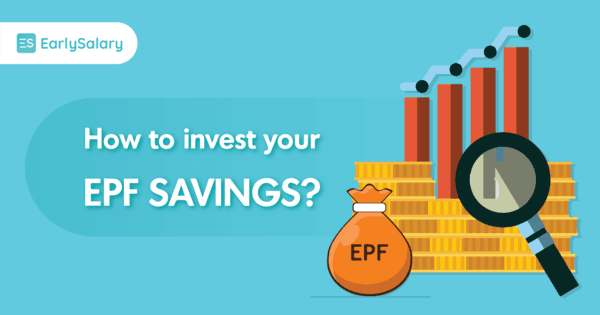
Highlight: Using your EPF savings judiciously for further investment can help you finance your post-retirement life without falling short in any aspect.
Wise saving and investment are the first steps towards financial security and there are numerous options you can rely on to ensure this. One such scheme is the Employee’s Provident Fund, commonly known as EPF.
Launched by the Employee’s Provident Fund Organisation (EPFO) under the Government of India, this savings scheme enables the salaried class to build a habit of saving money and create a retirement corpus.
Read on to learn about what is EPF and how to invest your savings accumulated under it for maximum gains.
Also Read: Here’s How To Find The Right Balance Between Saving, Investing and Spending
This savings scheme is open to both private and government employees. Additionally, any organisation that employs more than 20 people is bound to extend the benefits of EPF to its employees. The regulations prescribed by EPFO demarcate that an employee whose basic salary is not more than ₹15,000 a month at the time of joining is not eligible and is called a non-eligible employee.
As such, if employees are earning more than ₹15,000 a month, the employer must enrol them in EPF. This is mandatory under the instructions of the Employees’ Provident Fund and Miscellaneous Provisions Act, 1952. However, individuals with different income levels or those whose employer is not required to enrol them in EPF can voluntarily opt for this scheme.
The employee needs to contribute 12% and the employer contributes another 12% of the salary, which gets further divided into EPS and EPF. To incentivise women’s employment in the formal sector and augment their home salary, the Government of India reduced the contribution of women to 8% for the first three years of their employment in the Budget of 2018.
The EPF lock-in period is until you retire or resign. Employees who become eligible under the EPF are also entitled to several benefits under the scheme. These include insurance benefits and pension benefits.
For the financial year 2022-2023, the pre-fixed rate of interest offered by the EPF scheme is 8.15%. The interest on the EPF account is calculated monthly on the monthly running balance. To calculate this, you can use various EPF calculators available online.
Moreover, EPF investment comes with tax exemption benefits. It means that the interest accumulated by the amount invested in a PF online account is tax-free. As such, the main and most important benefit of investing in this plan is that you can start with a minor amount of savings and reap considerable wealth when you retire.
Also Read: How much of your salary should you save?
With a lifetime’s worth of savings in your EPF account, you may think that you will have a smooth retirement life. However, funding your expenses after retirement can be a tricky affair, especially if you just have a corpus and are not utilising it to generate a safe and stable income inflow.
Investing in your EPF savings is one way to generate an income even after you stop earning. Here is how to use EPF money to invest in other schemes after retirement:
The Senior Citizens Savings Scheme is specifically designed for retired individuals. It offers an interest rate of 8.2% with a five-year lock-in period. The investment amount can range from ₹1,000 to ₹30 lakhs. This investment avenue is safe from market changes and thus is safe. In addition, it has backing from the Government of India, ascertaining its authenticity.
A fixed deposit is one of the most popular investment options for saving as interest rates remain unaffected by market fluctuations, resulting in assured returns. Additionally, you can choose from multiple payout options to inject cash inflow as per your requirements. The interest rate of FD varies depending on the issuer. Tax-saving fixed deposits have a lock-in period of 5 years. The minimum amount to make a bank FD can be as low as ₹1,000.
This option could be viable, but only if you already own your primary residence. This is because rent is the only way you can draw income from a property, which cannot be possible if you are residing in it. The investment can be in any real estate space that offers you a rental income, such as home or office space.
However, it is important to remember that investing in property is one of the least liquid forms of investment and its value can plunge if the economy crashes. Currently, rental incomes are low when compared to the other investment options.
EPF is one of those savings schemes that help you safeguard your future after retirement. Using your EPF savings judiciously for further investment can help you finance your post-retirement life without falling short in any aspect.
By choosing the right mix of retirement options, you can build a profitable investment portfolio that comes in handy in times of need. However, if you fall short on cash after investing, you can opt for an instant personal loan. Fibe offers hassle-free access to an Instant Personal Loan of up to ₹5 lakhs at competitive rates and flexible tenures.
Download the Personal Loan App, or register on our website to access funds within minutes!
While many people know how to invest in EPF, they aren’t aware of where to invest these savings after their retirement. After retirement, you can invest in Senior Citizen Savings Scheme (SCSS), fixed deposits or real estate property.
If EPF rules apply to your employer, they will create an EPF account in your name, where they will make an investment of 12%. You will need to contribute another 12% to the corpus. The Employee’s Provident Fund allows you to earn an interest rate of 8.15% on the contributions, resulting in considerable growth in your corpus.